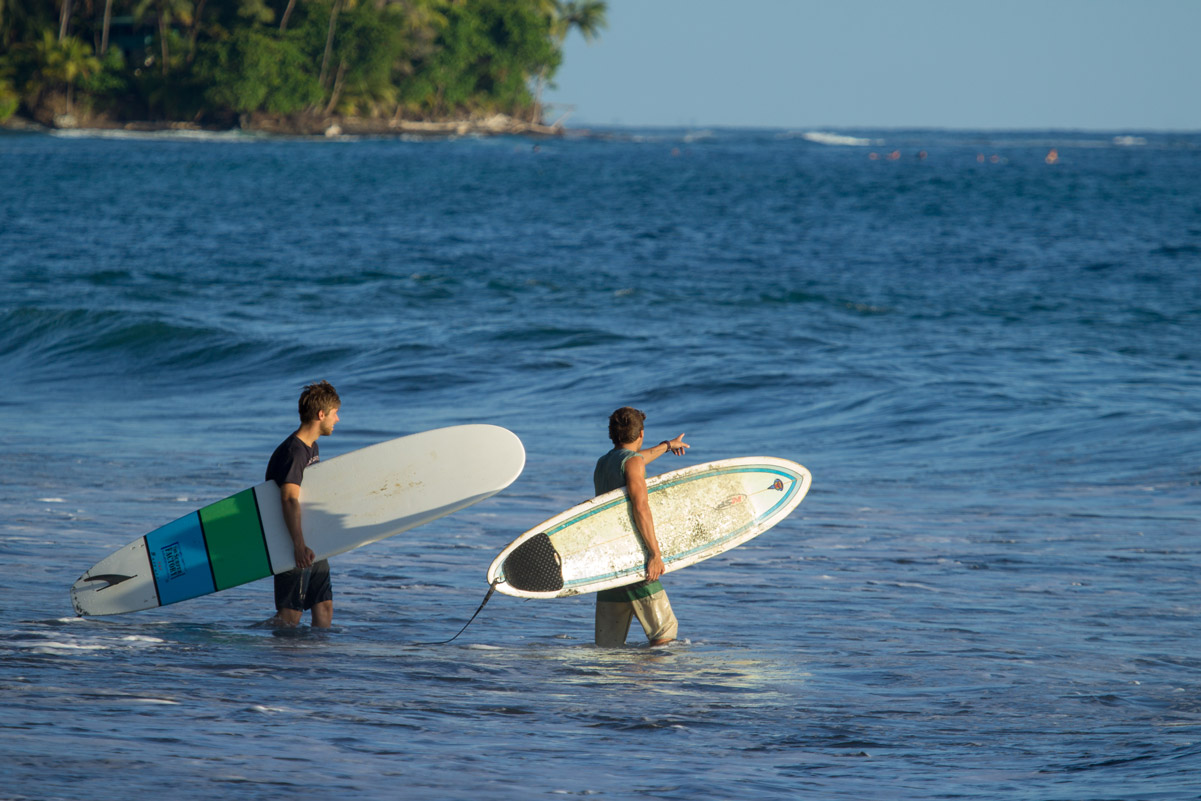
03 Feb How to find the best surf spot to learn how to surf | 7 tips for beginner surfers
You’re thinking to start surfing and going on a dream adventure but you would like to find the best surf spot to learn to surf?
Your brother’s best friend advised you to organize your trip by yourself while your cousin recommends an all-inclusive surf camp?
Whatever your decision is, here are 7 tips to consider to find the best surf spot for beginner.
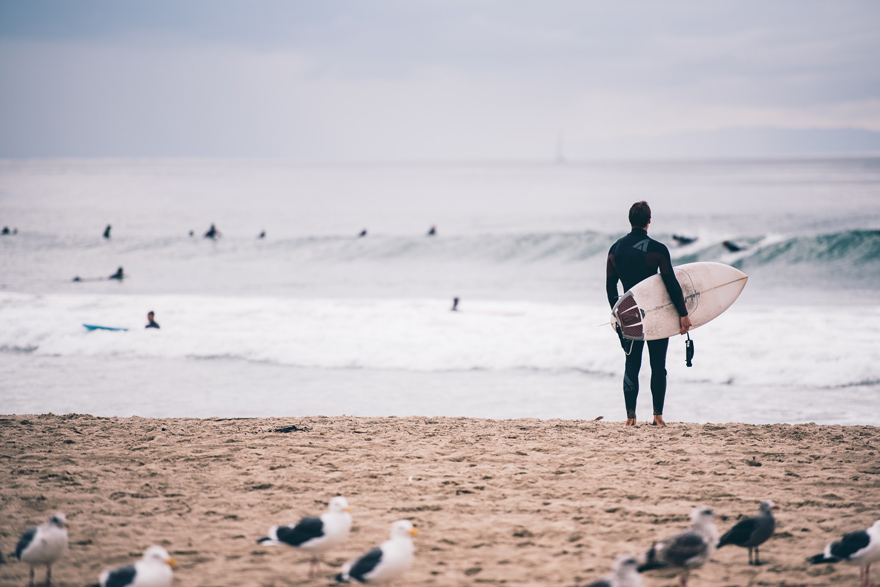
It’s decided!
Your next trip is a surf trip!
Niceeeeee!
This is one of the best decisions of your life that you just took!
You might be thinking ok.. surfing looks fun and cool, but “surf” means to be in the sea, meaning big waves that can “pick you up”, meaning I don’t want to get wiped-out and not have fun during my first “real” surf trip …. so if you’re conscious enough to be telling yourself this, you’re already on the right path!
To help you choose the best surf spot for you, we have pointed out 7 of the most important factors you should consider before choosing where to go.
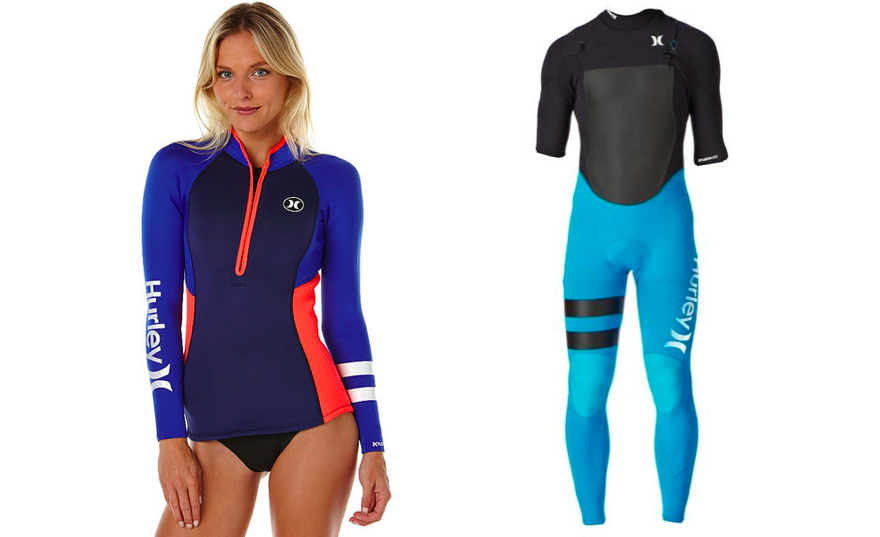
# 1 Surfing in cold or warm water?
Do you already imagine yourself in your bikini or board shorts, sitting on your board and working on your tan while waiting for the next wave? Learn first about the temperature of the water because depending on the time of the year, you might want to wear a wetsuit to stay in the water without having frostbites or having to get out after 40 minutes!
It seems obvious but you could be surprised! As an example, if you are going to northern Mexico (Baja California), we advise you to bring a shorty (2 mm short sleeve, long leg) and south of Nicaragua or northern Costa Rica, a top of 1-2 mm between the months of January to March, when the offshore winds are the strongest.
Do yourself a favour and research the temperature of the water according to the region and time of the year where you plan on going to bring the appropriate wetsuit. It will optimize the time you can comfortably stay in the water so that you can catch more waves!
A top 1-2mm is also very practical to protect your skin from the friction of the board wax and your skin, which can cause some irritation.

# 2 Less flying time = more time in the waves !
If you only have one week of vacation, you might be disappointed to have to waste 2 days traveling, like the usual 26 hours and 4 stopovers to go to Indonesia (plus 1 day and a half to recover from jet lag ?).
You might have a friend who travelled to 6 countries in only one month.
Don’t be that person.
Travelling is about relaxing, feeling the vibe of the place and discovering a different way of living, not hopping between bus and trains to cover the most distance in the shortest time. Otherwise you might need a vacation on your return from your travels.
So obviously, the further your chosen destination is, the more vacation time will be transformed into plane time, waiting at airport, waiting for the plane to take off, etc.
In addition, the time difference is a factor to take into consideration as it will take a few days to adapt to the jet lag if you are travelling far away.
In a sport like surfing, it is better not to start your stay being exhausted, since this sport requires a lot of energy!
So if you’re planning to do an organized surf camp to Indonesia, plan to arrive a few days before to adapt to the jet lag so that you can fully take advantage of every single day from day 1. For shorter stays, we advise you to choose a surf destination with little or no time difference.
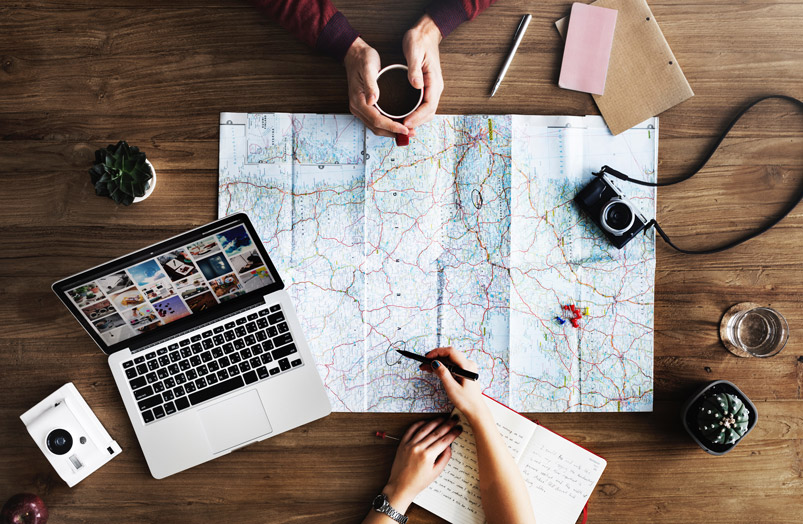
# 3 No need to break the bank to buy a plane ticket to go surfing
The cost of the plane ticket is definitely another factor of influence. The more exotic the destination, the more expensive the plane ticket often is, and the more complicated it is to get there (ex: Fiji, Indonesia, Mentawais, Galapagos Islands).
It’s quite expensive and sometimes even impossible to take a direct flight or a flight without many stopovers to these destinations, so you might need to plan a bit more time (and money) to get where you want to go.
The time of the year when you go on holiday will also influence the cost of your flight ticket.
Keep in mind that flights during general construction industry holidays (last 2 weeks of July) spring break (1rst week of March) and Christmas holidays December 21- January 5th) are more expensive.
So if these are the only times you can get time off work, plan as early as you can to book your flight tickets!
(pssst. If you’re interested in knowing my special tricks for finding cheap flights and how I found my return flight ticket to Costa Rica for less than $ 500, make sure to subscribe to our newsletter)
# 4 Is living close to the the surf breaks expensive or cheap?
If you planned a budget and are dedicated to respecting it, the cost of living in the country where you go will certainly influence your decision.
In Costa Rica, it’s probably better to opt for a surf camp with an all-inclusive plan (meals, accommodation, surf lessons, etc.) to avoid having a bad surprise about the high cost of living once you get there.
You wouldn’t expect a country with so many unpaved rocky roads to be so expensive (although nature and waves makes it totally worth it)!
You’ll also benefit the local knowledge to surf more waves if you choose your surf camp carefully.
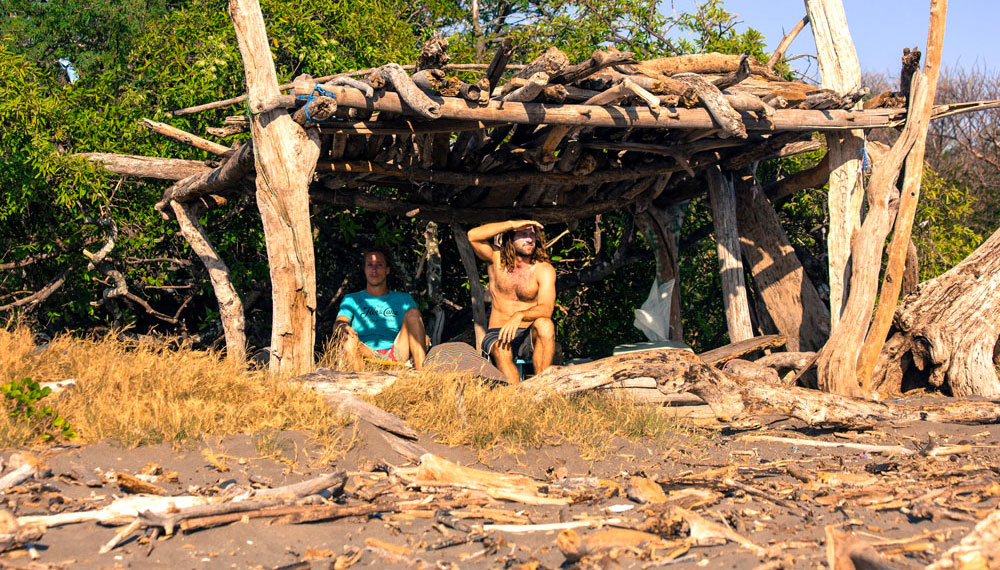
Costa Rica is often referred to as the Switzerland of Central America. It is also my favourite and probably the most beautiful country in Central America with its lush rainforests, abundant wildlife and world-class long waves, but it can dry up your bank account pretty quickly if you’re not careful.
Some destinations require a visa whose application must be made in advance. This is not the case in Central America.
The cost of this visa may vary depending on the destination. In central America, most countries require you to pay for a tourist card when you arrive:
Nicaragua: $10 when you enter the country, allows you 90 days in the country as a tourist.
Costa Rica: $29 when you exit the country by plane, 9$ when you exit by land, allows you 90 days in the country as a tourist
Panama: $3 when you enter the country, allows you to stay 180 days in the country as a tourist
You also might want to consider the cost of vaccines and medications required for your trip if you go to an area where the risk of malaria or other diseases are present.
# 5 How big is the swell at the time of the year when you plan on going?
The power and height of the waves depend on the swell hitting the coastline.
This is a very important factor when you are starting to learn how to surf. It is advisable to start on waves not bigger than 2 to 4 feet (0.6 to 1.2 meters).
There are months during the year which receive more swell than others.
You can read more about the power of the swell at different seasons and the best time to go surfing in Central America depending on your level and your expectations.
You should also pay attention to the currents and the strength of the waves which can be dangerous if you’re just starting to learn how to surf.
Inform yourself about the swell and the strength of the waves at the time of the year when you plan to go. It is recommended to go in the water with someone who has experience surfing and who can help you if you need assistance.
For example, your friend told you to go to Puerto Escondido because he went there last December-January and loved the beach break and the nightlife, and he is telling you that the waves where perfect, only 2-3 feet (since this time of the year receive almost no swell).
But be aware that going between April and November will be most likely impossible for you to surf since it will be 10-20 feet at playa Zicatella and you might have to struggle at the side spot of La Punta with 40 other beginner-intermediate surfers in the same situation.
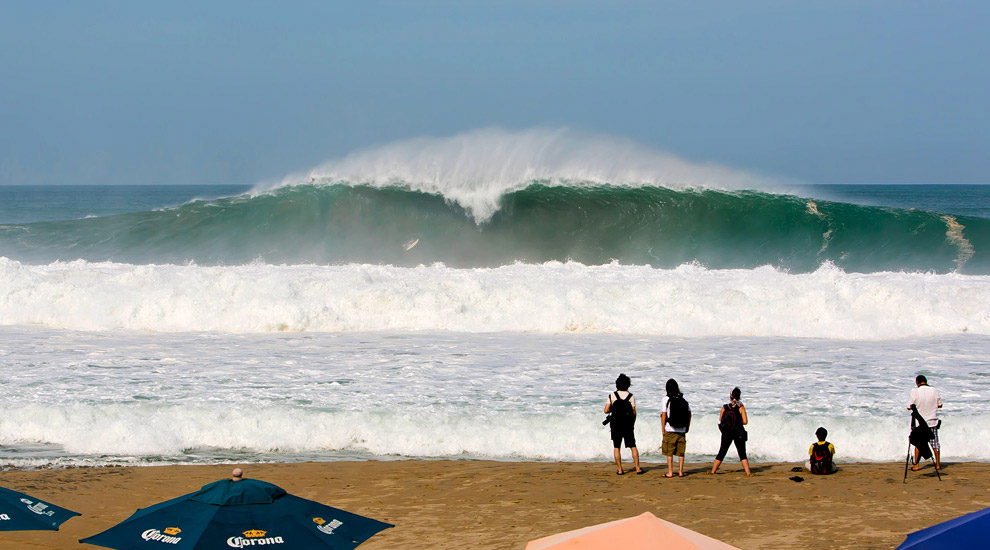
# 6 What are the best types of waves for beginner surfers?
Let’s look at the different kind of surf breaks:
Beach breaks
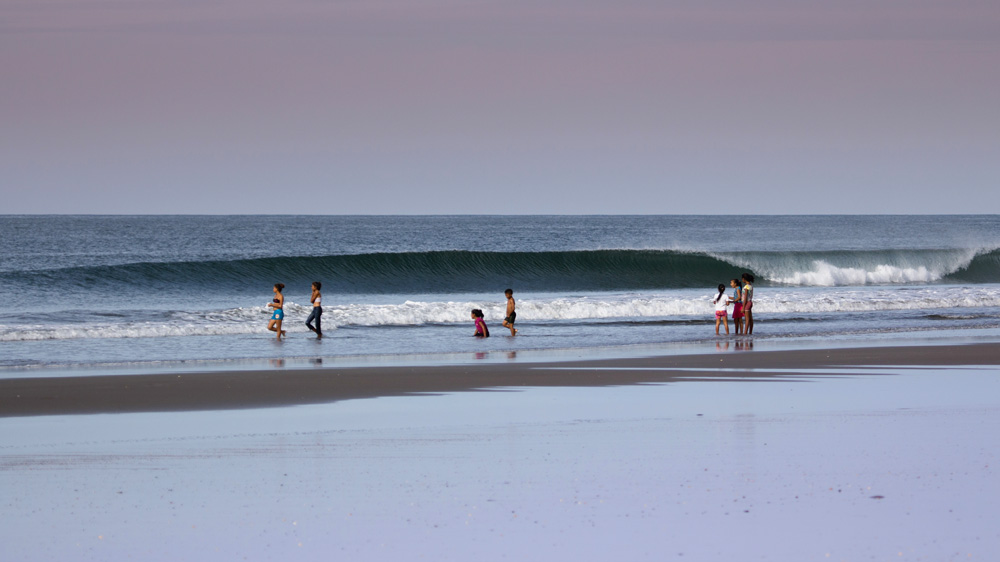
The type of sea bottom is another point to take into consideration for new surfers. “Beach breaks” are waves breaking over a sandbar.
Most of the time, this is the ideal type of sea bottom for beginners, since it is less dangerous if you find yourself thrown deep into the water after falling.
But some beach breaks are also famous for being reserved for advanced surfers since the strength of the swell hitting those beaches are massive and create powerful, hollow tubes. Ex. Hossegor (France), Puerto Escondido (Mexico), La Gravière (France), Supertubos (Portugal), Playa Colorado (Nicaragua).
Rip Currents
Rip currents are usually formed by the sandbanks in the bottom of the water, so make sure you understand how to get out of a rip current if you get caught by one.
Make sure to have a friend or someone at the beach keeping an eye on you.
We’ll cover how to escape rip current in another article soon, but basically, when the waves get to the shore, the water needs to go back to the sea. It will choose the easiest route (the deepest channel formed by the sandbanks under the sea) which will create a strong current that can pull you away to the sea with it. By calmly paddling parallel to the beach, you will eventually exit the rip current and be able to then paddle back to the beach.
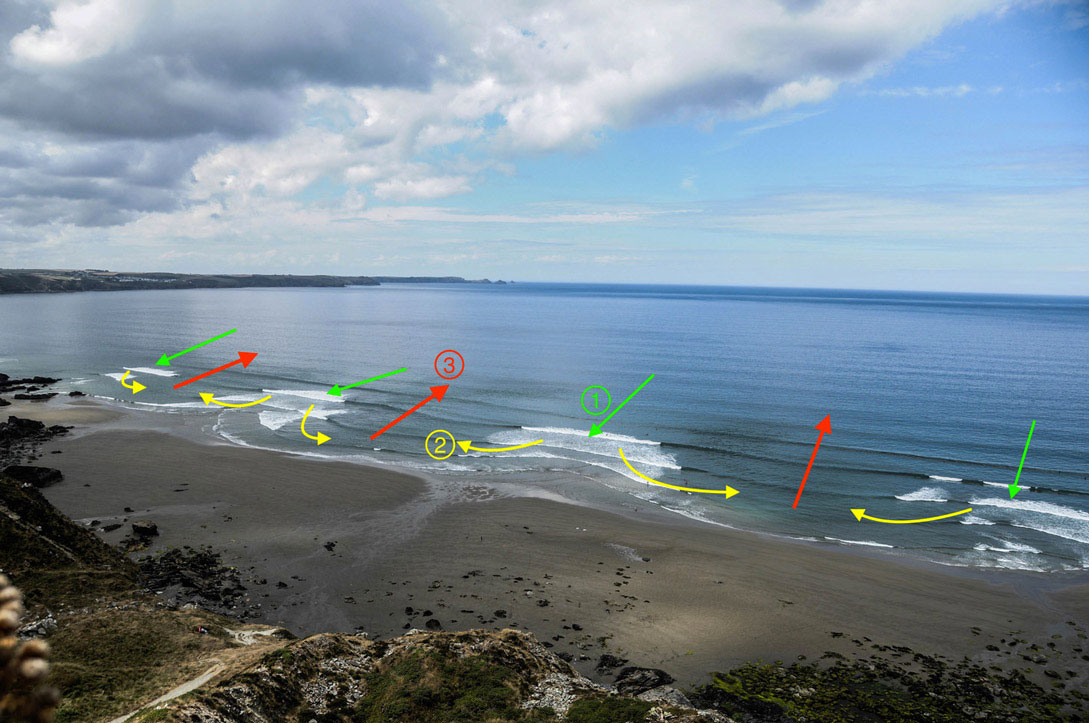
Try to always be conscious of where you are when you leave the beach to go surfing.
Find your position relative to where you left the beach to paddle out and understand how far from the sand you need to be to catch the wave.
If you see that you’re getting pulled away, don’t panic and swim parallel to the shore. If you have someone at the beach looking out for you make them understand that you’re caught in the rip and to find some assistance for you.
Point breaks
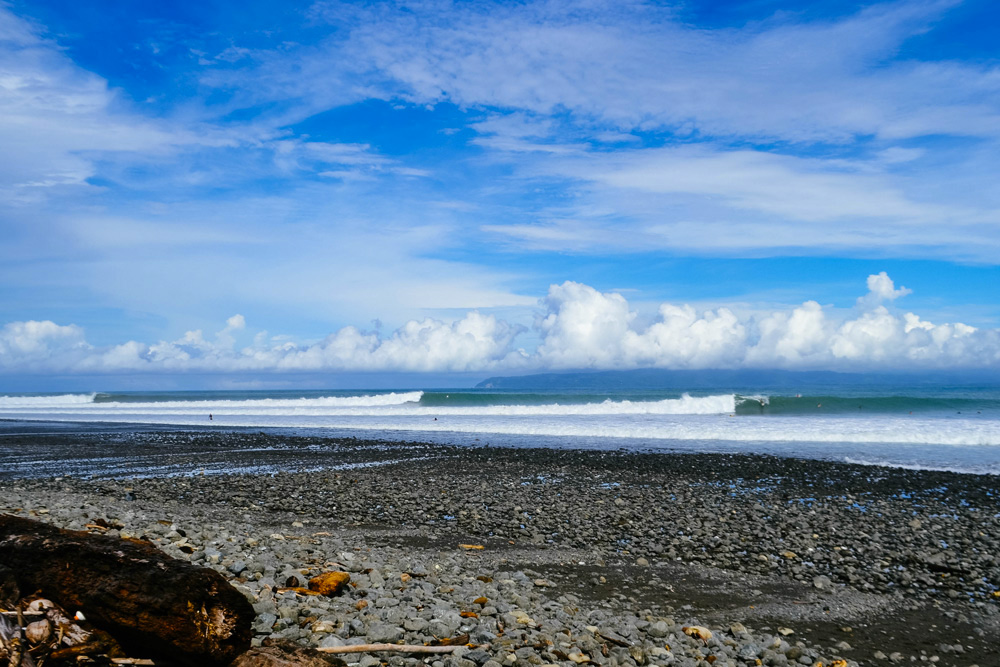
Point breaks are a type of waves usually more sought after by surfers since the waves break longer than on a beach break.
Produced by a rocky point or jetty, the advantage is that we often do not need to pass the break (the impact zone where the energy of the wave is released), since we can bypass this impact zone to get to the “peak”(The place where the wave begins to break).
So it’s much easier for a beginner to get off and take green waves, not just white foams from the broken waves of a beach break.
It might be a bit more of a paddle to get to the peak but at least you’re not fighting against the waves and the whitewash pushing you back to the shore.
There are also often fewer risks of being caught in a rip current that would pull you away to the ocean.
When we were in our early travelling years and searched for waves between Mexico and Peru, we found that the best point break was in south Costa Rica.
This is the reason why we choose this area to start our surf camp in Costa Rica.
It is located just minutes from the longest warm water point break in the world.
Reef breaks
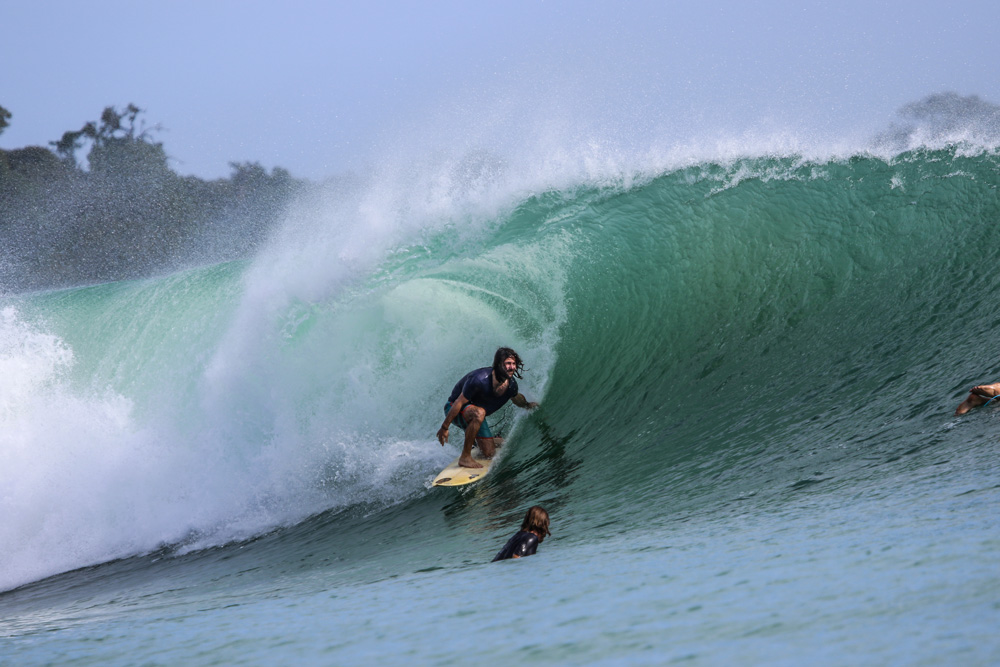
“Reef Breaks” are produced by rocks, coral or reef barrier under the water.
This type of wave generally can create a barreling wave, as the mass of water hits a shallow reef barrier, which can also be sharp.
There are some reef spots for beginners out there but research carefully as it’s not always the best option if you are just starting to learn how to surf.
It is advisable that you have some surfing experience before adventuring yourself on a reef break.
Research the waves you plan on going to and find out if you need to wear surf booties to prevent cutting your feet (if the wave breaks in shallow water).
Remember not to dive into the water at the end of surfing your wave. Fall on your back as a star instead.
You can watch our episode in Panama to see how a reef breaks works.

# 7 The Crowd Factor : How to find the best surf spot for beginner surfers if there are too many people in the water?
No place to put your towel on the beach?
Imagine the same thing happening in the water. This is often the problem of popular surf spots (ex: Waikiki, Hawaii, Playa Maderas, Nicaragua, Playa Tamarindo, Costa Rica, The pass, Byron Bay, Australia).
We can think that surfing at a popular beach would be safer but it’s quite the opposite.
The more tourists and beginner surfers in the water, the more dangerous it becomes because of the boards going in all directions, so take this into account when choosing where to surf.
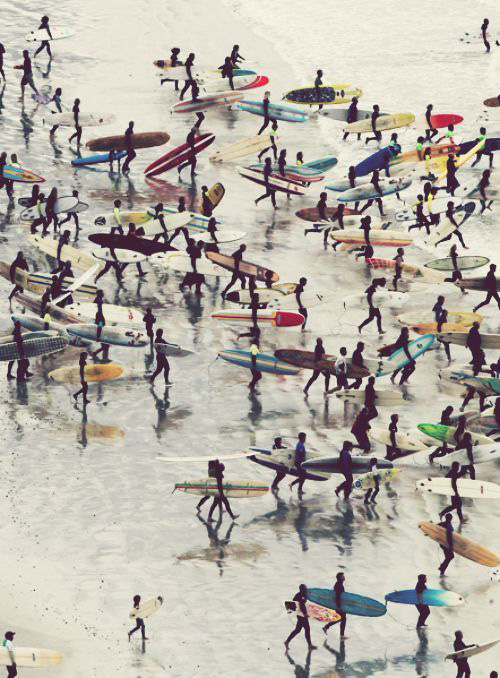
Finding uncrowded waves…
Finding uncrowded waves is not an easy task nowadays since the popularity of surfing has grown exponentially.
But ask anyone who’s been surfing, it is much more pleasant to go surfing on deserted waves.
Fewer people, more chance to catch more waves, surf more and improve faster.
This is the reason why we’ve always been focusing our surf trips to unique places, out of the beaten path, at our surf camp in Costa Rica and our surf trip to Nicaragua.
We’ll take you to surf spots that are not so well known so that we can often surf by ourselves…
(This is the reason why we do not display the names of the surf spots on our website and that we ask you keep them secret if you come on one of our surf trips.) ?
Have a look at the waves around our surf camp in Costa Rica. We think they are simply the best waves to learn how to surf…
This article was aimed to explain you some basic knowledge about what to take into consideration when searching for your next surf adventure.
We didn’t want to just list you a “top 10” of the best surf spot for beginners, but to teach you how to judge and do your own research.
We are in the process of making another article on our top 10 best surf spots for beginners.!
So please tell us the story about your first time surfing in the comments below! You might get featured in our next article. ?
– > Are you a beginner surfer?
If so, you might be interested in reading:
